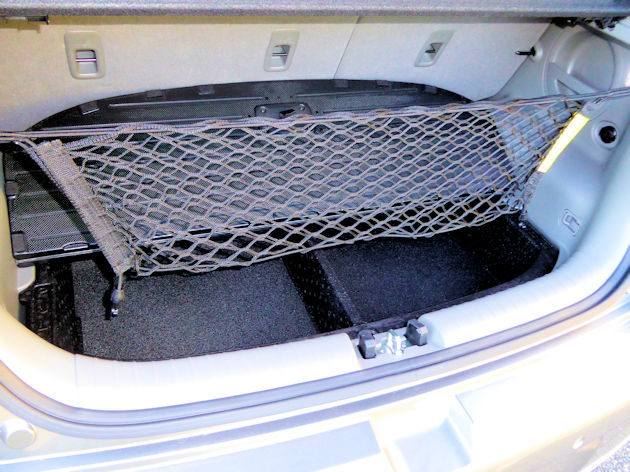
By Barbara & Bill Schaffer
Over the last few years we?ve have driven about a dozen different all-electric vehicles and the more we drive an EV, the more we like them. Sure, we still have a twinge of range anxiety each time, but the comfort level keeps improving and part of that is because the range of these cars keeps improving.
One of our favorite electric vehicles has been the Kia Soul EV, partially because the Soul is such a fun vehicle to start with, and because the electric version is so user friendly. We go out, run errands, go to appointments, shop and do all our regular activities around the Portland (Oregon) metro area and then we come home, open the charge door plug in the electric cable and go in the house. The next day it?s ready to go with a full charge with an estimated range of 93 miles, based on what the range gauge on the dash says, and what the EPA estimates. The EPA says the MPGe (miles per gallon equivalent) is 120 MPGe city, 92 MPG2 highway and 105 MPGe combined.
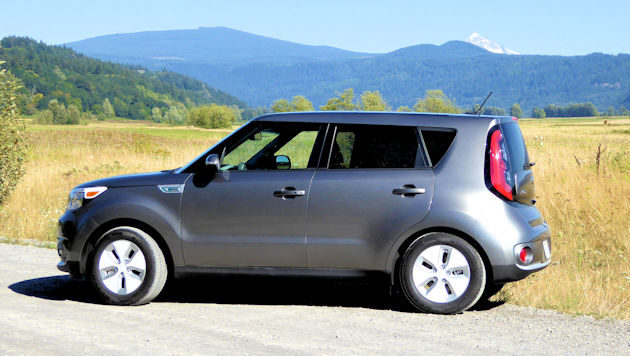
The 2016 Kia Soul EV produces that range with its state-of-the-art 27kWh air-cooled, 200-watt-hour/kg Lithium Ion Polymer battery, located under the floor. Charging is accomplished by plugging into any standard 120v outlet or a conventional 240v EV charger. ?Two charging ports are standard, including a SAE J1772 port for Level 1 and Level 2 AC, and a CHAdeMO DC fast-charging port (480v) which is found in some commercial charging stations.
Recharging times vary from 24 hours for a fully depleted battery using a standard 120v outlet to under five hours when plugged into a 240v outlet. ?An 80-percent charge can be achieved from empty in as little as 33 minutes with a 50 kW-output DC fast charger.?If we owned the Soul EV, we?d probably invest in the 240v version. We?ve noticed Bosch recently introduced a 240v Level 2 charger for only $450 plus installation, so the prices are coming down on the chargers as demand grows.
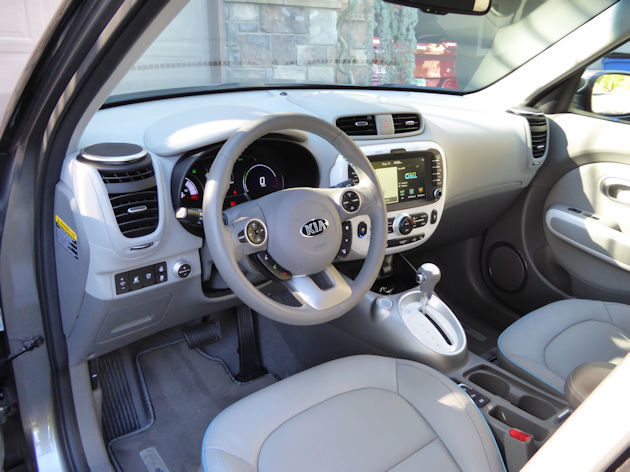
In addition to charging when it?s plugged in the Soul EV also uses Kia?s third-generation regenerative braking system which can capture up to 12 percent of the car?s kinetic energy, which is fed back into the battery while the Soul EV is coasting and braking.?The car has four drive mode combinations to allow the driver to program the car for the type of driving, and that can affect the battery usage.
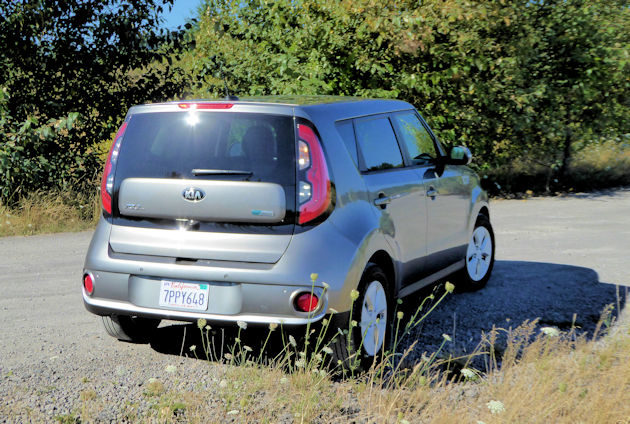
When we drove the first Soul EV a year ago we discovered it wasn?t much different than driving the popular gasoline-powered model. Obviously it?s quieter and smoother, but it accelerated comfortably and even passes quickly when necessary. Unless you are pulling up to a charger, or someone is ?into? electric cars, most people won?t notice much difference. Visually, the aerodynamic-looking wheels, the solid grille area and the logo on the back are the only external differences.
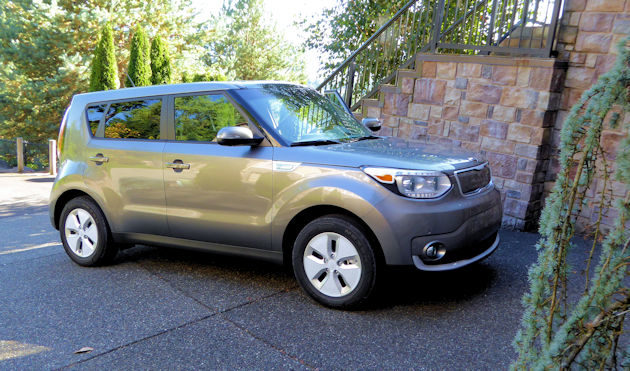
The Soul EV is Kia?s first venture into pure electric vehicles, and they picked one of their most popular models to represent the brand?s efforts in the all-electric-zero emissions arena. The hip urban crossover was initially designed to use either a gas or electric drivetrain, so the 109-hp electric motor fits nicely under the hood in place of the gasoline engine. The motor produces 210-lb.ft. of torque giving it a spunky response when stepping or stomping on the accelerator.
Under full acceleration, the Soul hums up to 60 mph in 9.2 seconds according to a buff magazine testing. The motor is liquid cooled and uses multi-layer magnets which improve efficiency and reduce the familiar electric motor whine, in fact inside we not could hear any whine. The Soul EV has a top speed electronically limited to 90 mph.
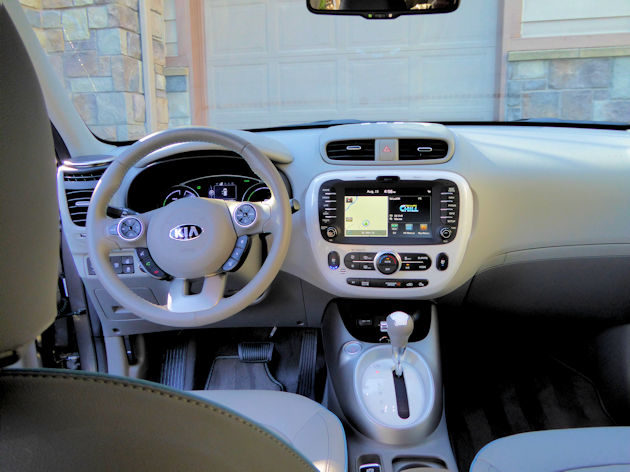
The standard navigation system in the Soul EV also shows how far you can go on the current charge level and will give you a list of nearby charge stations, should your range anxiety and range gauge collide, and you feel the need to charge.
The battery tucks nicely under the rear seat area and the flat design minimizes intrusion into the cabin reducing rear leg room by about three inches, but it still has more legroom than some competitors. Rear cargo space remains unchanged at a spacious 18.8 cubic feet, so it shouldn?t limit shopping purchases.
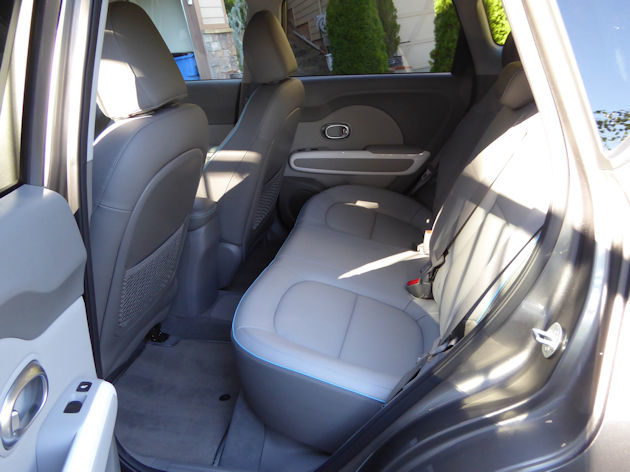
For 2016, the Soul EV is offered in three trims ? Soul EV-e, Soul EV, Soul EV+ (plus).? Offering a long list of standard equipment at a lower price point, the Soul EV-e brings new value for those looking for a fun and funky alternative in the EV segment.? The Soul EV+ continues as the range-topping trim, and is further enhanced for 2016 with the addition of the Sun & Fun Package.
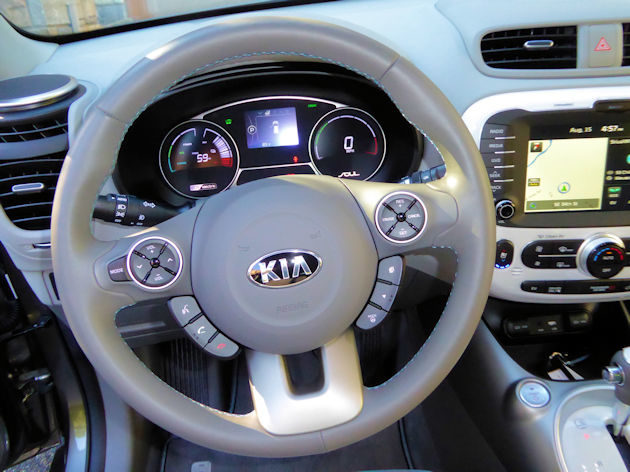
Soul EV-e pricing starts at $32,800, including the destination charge, however when you factor in the $7,500 federal tax credit, the price looks reasonable at $25,300. The Soul EV is priced at $34,800, and the Soul EV+, which adds leather seating, parking assist, fog lights, heated and ventilated front seats and power folding outside mirrors is just $2,000 more. One feature we?d like to see is a blind spot warning system, because the large ?C? pillar makes it difficult to see other vehicles in your blind spot. Another plus would be an active cruise system. For more information on the Kia Soul EV go to?http://www.kia.com/us/en/vehicle/soul-ev/2016?.
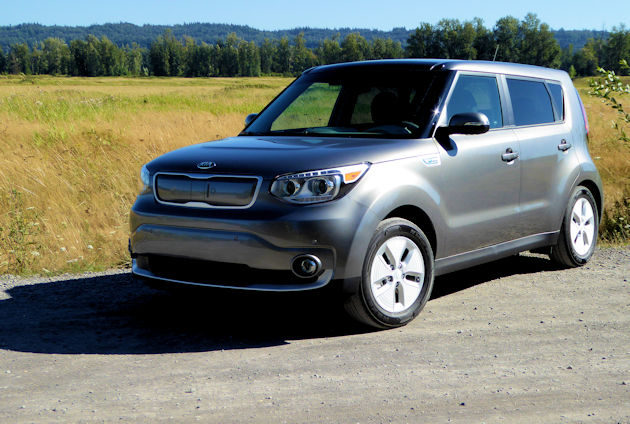 Getting to the soul of the Soul, it makes a lot of sense for someone or a family that sticks fairly close to home or uses it for commuting. Owners can save big by not having to buy gasoline and that provides a nice benefit for the environment. A good scenario would be to have a Kia Soul EV for around town and something like a Kia Optima for trips out of town. Or rent a car for a trip.
Getting to the soul of the Soul, it makes a lot of sense for someone or a family that sticks fairly close to home or uses it for commuting. Owners can save big by not having to buy gasoline and that provides a nice benefit for the environment. A good scenario would be to have a Kia Soul EV for around town and something like a Kia Optima for trips out of town. Or rent a car for a trip.
